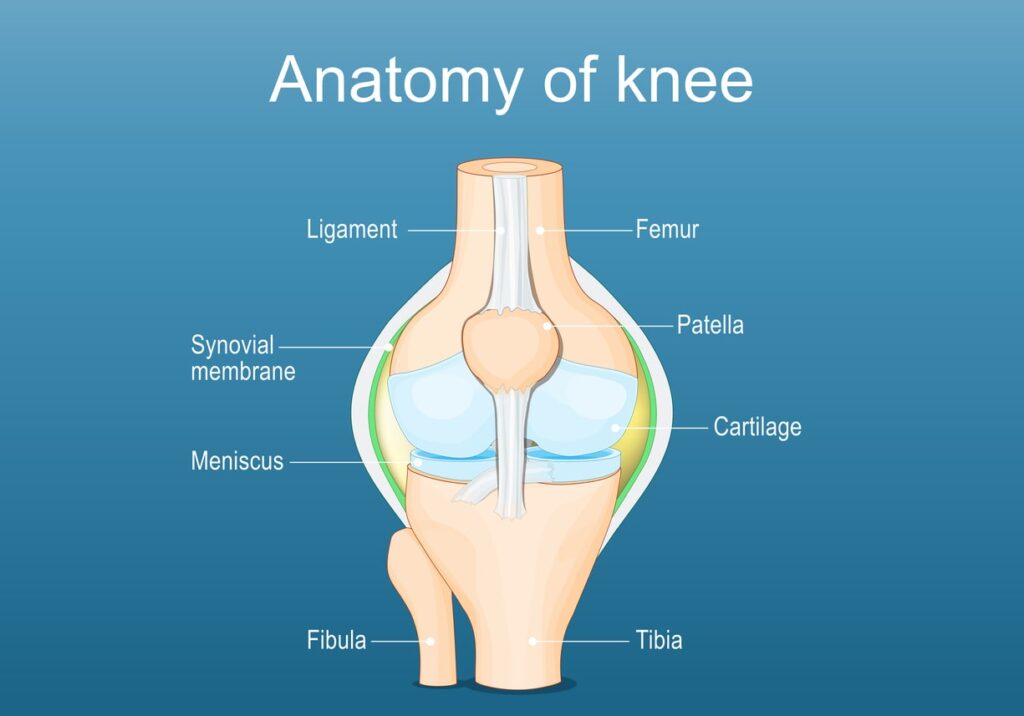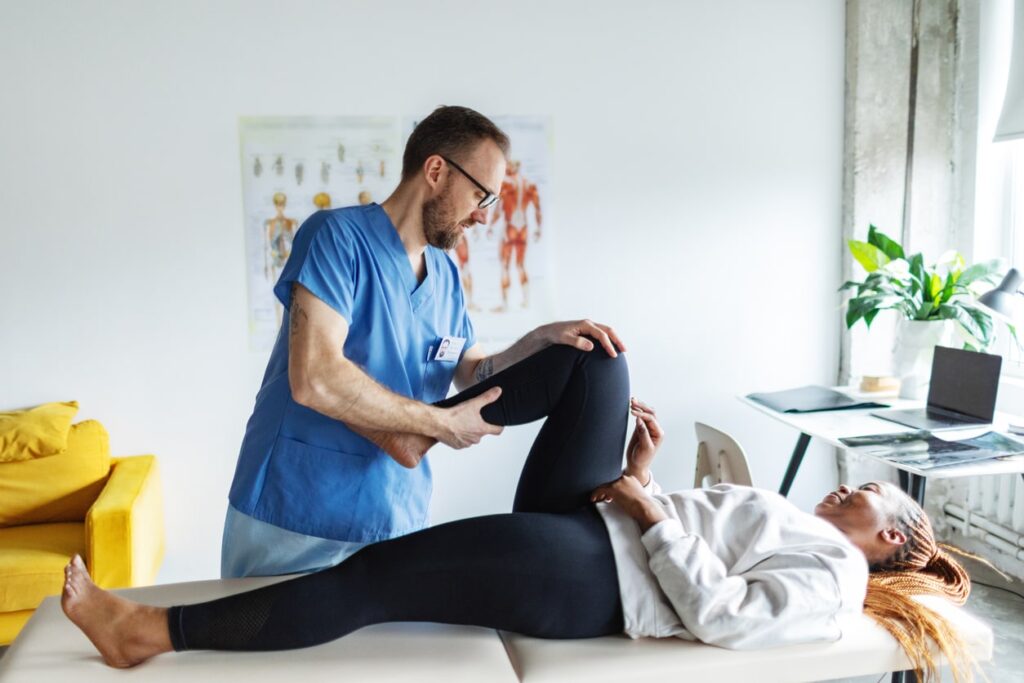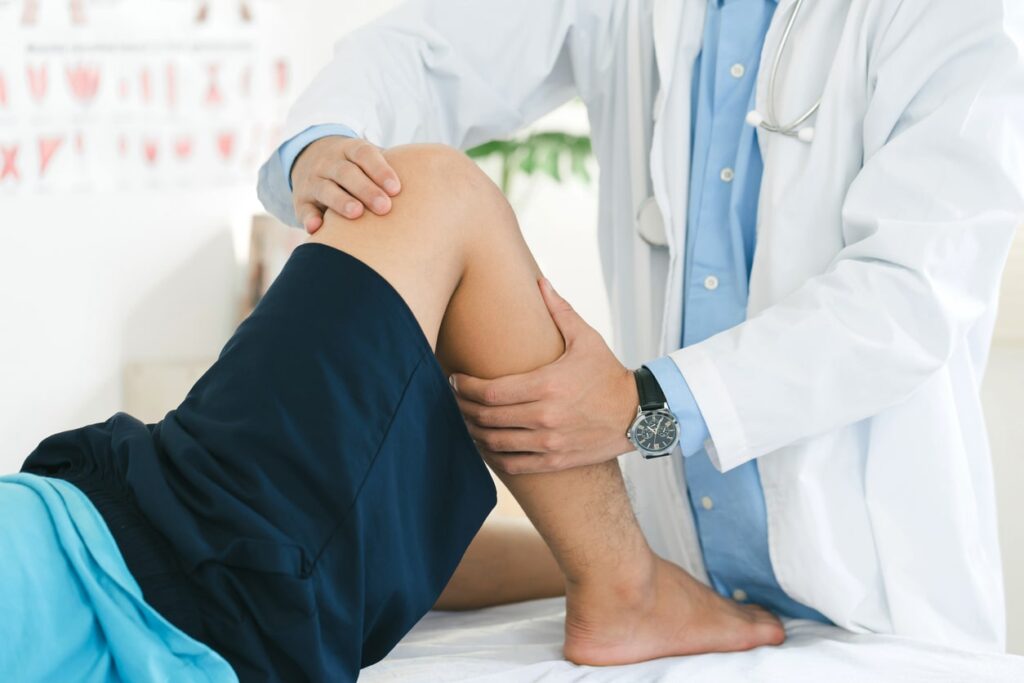The Medial Collateral Ligament (MCL) is a ligament on the inner side of your knee that helps keep it stable and prevents it from bending inward. It plays an important role in how your knee works and is often injured during activities that involve quick twists or direct impact. Whether you’re an athlete or someone who has hurt their knee, understanding the MCL can help you recover and stay active.
What is the Medial Collateral Ligament?
The MCL is a band of tissue running along the inner part of the knee, connecting the femur (thigh bone) to the tibia (shin bone). Its primary role is to stabilize the knee and prevent the tibia from moving too far outward in relation to the femur. It is one of the four main ligaments in the knee and plays a crucial role in maintaining knee function and overall joint stability.

Causes of MCL Injuries
MCL injuries can happen for many reasons, often involving stress or impact to the inner knee. Knowing how these injuries occur can help in both prevention and treatment. Common causes include:
- Direct Impact: A blow to the outer side of the knee, often seen in contact sports like football or soccer, can push the knee inward, putting excessive strain on the MCL. This type of injury usually results in a sprain or tear of the ligament, especially if the impact is sudden and forceful.
- Twisting Movements: Quick pivots or rapid direction changes, like in basketball, can cause the knee to rotate unnaturally. This twisting motion puts stress on the MCL. It often causes a sprain or partial tear, especially if the foot is planted while twisting.
- Sports-related Stress: Intense sports like basketball, soccer, and skiing involve cutting, jumping, and sudden stops. They can stress the MCL. Improper or excessive movements may weaken or overstretch the ligament. This increases the risk of injury.
- Falls: Falling directly onto the knee, especially when it is bent at an angle, can significantly strain the MCL. When the knee hits the ground with force or in an awkward position, it can lead to a sprain or tear of the ligament.
- Overuse: Over time, repetitive stress and movements in activities like running, cycling, or jumping can lead to microtears in the MCL. These small injuries build up, weakening the ligament, making it more prone to a bigger injury.
Symptoms of MCL Injuries
MCL injuries often come with noticeable signs that point to ligament damage. Identifying these symptoms early can help ensure timely treatment and a smoother recovery. Common symptoms include:
Tenderness: The inner side of the knee may feel tender to the touch, especially around the area of the MCL. This tenderness often comes with warmth or mild bruising, especially in severe injuries..
Pain on the Inner Side of the Knee: A key symptom is pain along the inner knee, where the MCL is. The pain can vary in intensity based on the injury’s severity. It usually worsens with activity or when pressure is applied to the area.
Swelling: Swelling around the knee joint is a common response to an MCL injury. It usually occurs within hours after the injury. It can range from mild to significant, depending on the ligament damage. The swelling can cause discomfort and restrict the movement of the knee.
Instability or “Giving Way”: MCL injury sufferers often feel their knee may buckle. This is most noticeable when bearing weight or doing activities that require support from the injured knee.
Limited Range of Motion: Difficulty bending or straightening the knee is common after an MCL injury. The pain, swelling, and instability can limit knee movement. This may affect walking and physical activities.
Different Grades of MCL Injuries
MCL injuries can range from mild to severe, and understanding these grades helps in determining the most effective treatment and recovery plan. Here’s what each grade means:
- Grade I (Mild Sprain): The ligament is stretched but not torn. Treatment usually involves rest, ice, compression, and elevation (the R.I.C.E. method). Incorporate gentle exercises to restore motion and strength.
- Grade II (Moderate Sprain): There is partial tearing of the ligament. Treatment may involve a longer rest period, bracing, and physical therapy. It may also include anti-inflammatory meds for pain management.
- Grade III (Complete Tear): The ligament is completely torn. Grade III injuries often need more rehab and, in some cases, surgery. This depends on the damage and the person’s activity level.

Diagnosis
Diagnosing an MCL injury usually starts with a physical exam. During the exam, your physician checks the knee for tenderness, swelling, and looseness in the ligament to assess its stability. To confirm the injury and rule out other problems like fractures or meniscus tears, you may undergo imaging tests such as an X-ray or MRI. The severity of the injury—ranging from a mild sprain to a full tear—helps determine the best treatment plan. Other factors, like the patient’s age, activity level, and overall health, are also considered to create a recovery plan that supports proper healing.
Treatment Options for MCL Injuries
The treatment for MCL injuries varies based on their severity, with options ranging from rest and physical therapy to surgical intervention. These treatment options include:
- Physical Therapy: Physical therapy focuses on strengthening the muscles around the knee to compensate for the weakened ligament and improve overall joint stability.
- Knee Bracing: A brace may be used to stabilize the knee during the healing process, especially for more severe injuries.
- Medications: Over-the-counter anti-inflammatory drugs can help reduce pain and swelling as you recover.
- Cold and Heat Therapy: Alternating ice and heat can reduce swelling, relieve pain, and boost circulation during recovery.
- Surgery: If a Grade III tear does not improve with conservative treatment, surgery to repair or reconstruct the MCL may be necessary, though this is less common.
Prevention Tips
To prevent MCL injuries, it’s important to strengthen the muscles around the knee, such as the quadriceps and hamstrings, to provide better support. Always warm up and stretch before activities to improve flexibility. Using proper technique during sports, like good form when running or jumping, can reduce strain on the knee. Wearing supportive, well-fitting shoes also helps protect the knee. Gradually increasing exercise intensity and mixing up your activities can avoid overloading the knee. These steps can help reduce the risk of MCL injuries and keep your knees healthy.

Contact Us for MCL Injury Treatment
MCL injuries can happen to anyone, but with the right approach, healing is very possible. Whether it’s a mild sprain or a more serious tear, timely treatment is crucial for getting back on your feet.
If you’re dealing with knee pain or suspect an MCL injury, Dr. Peter Howard, M.D., is ready to help. With years of experience in orthopedic care, he provides personalized treatment to get you back to your normal activities. Don’t wait—schedule your appointment today and take the first step toward a full recovery.
